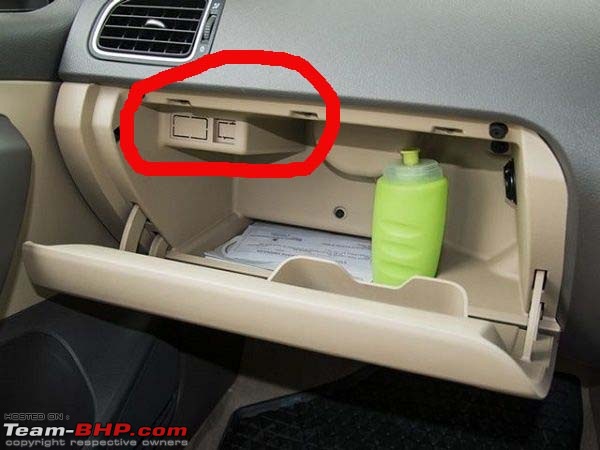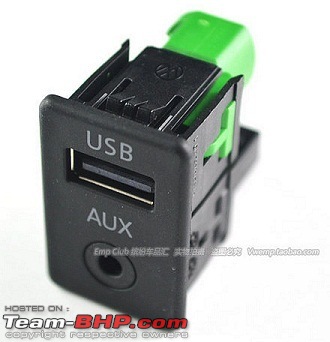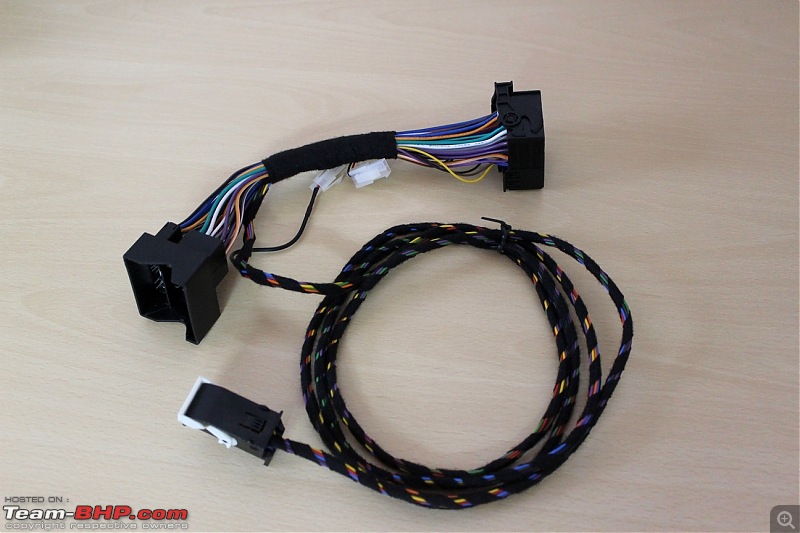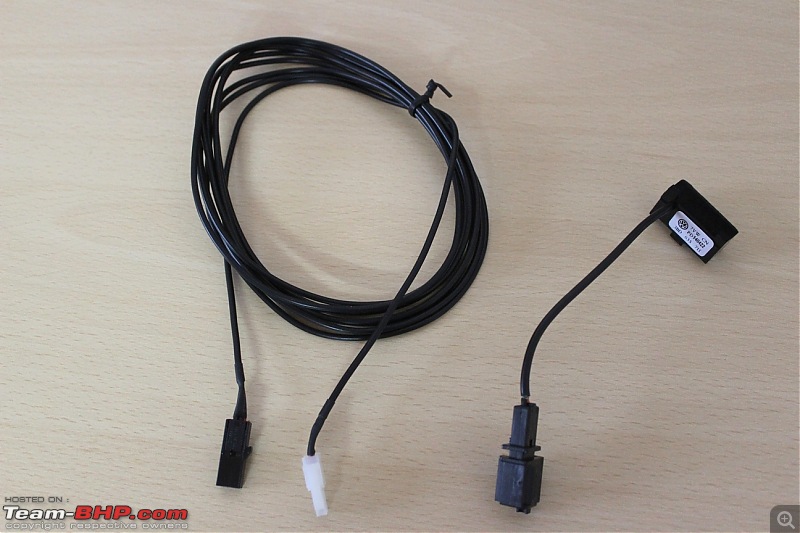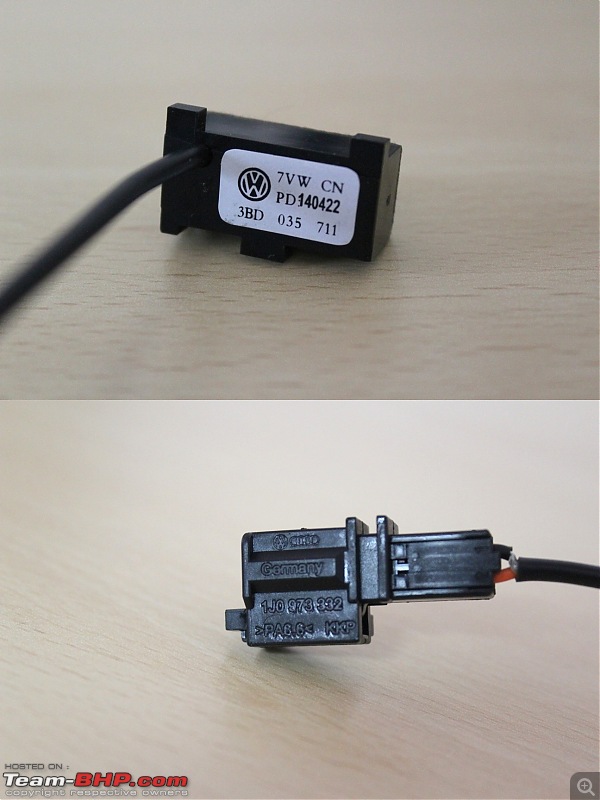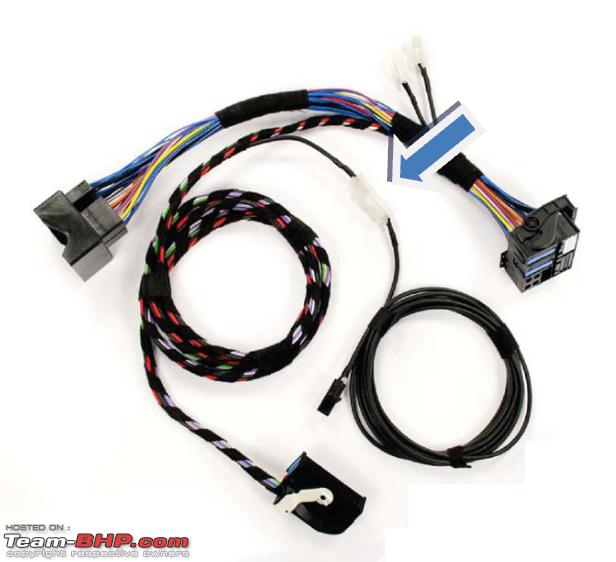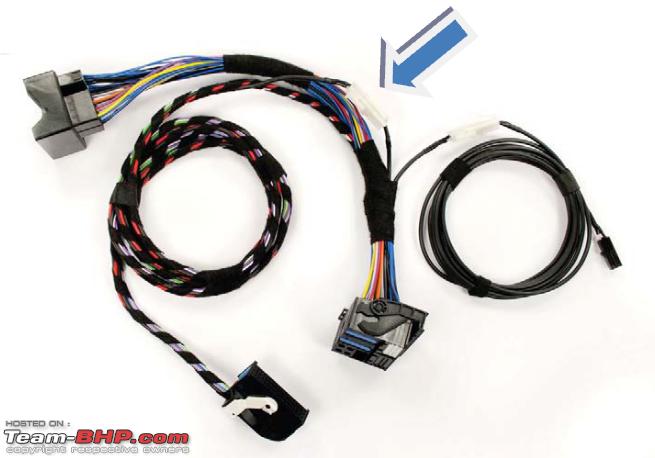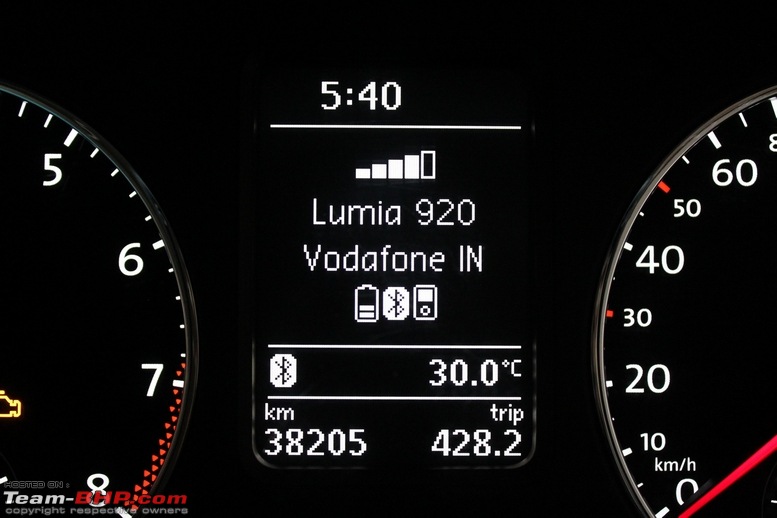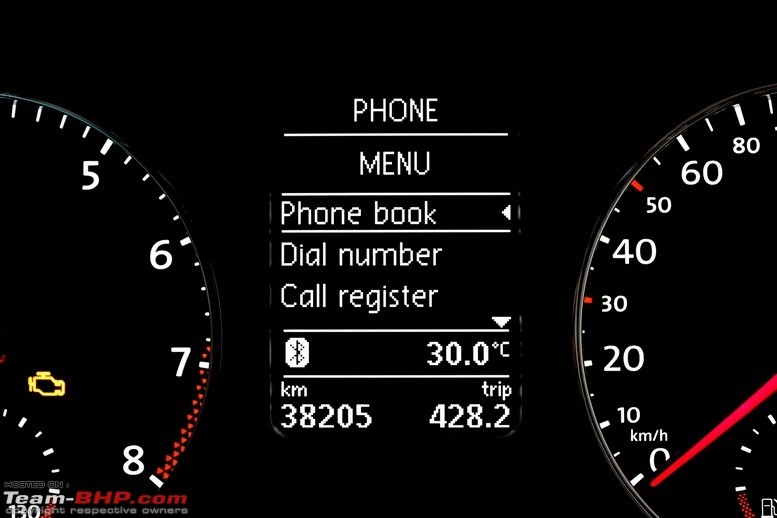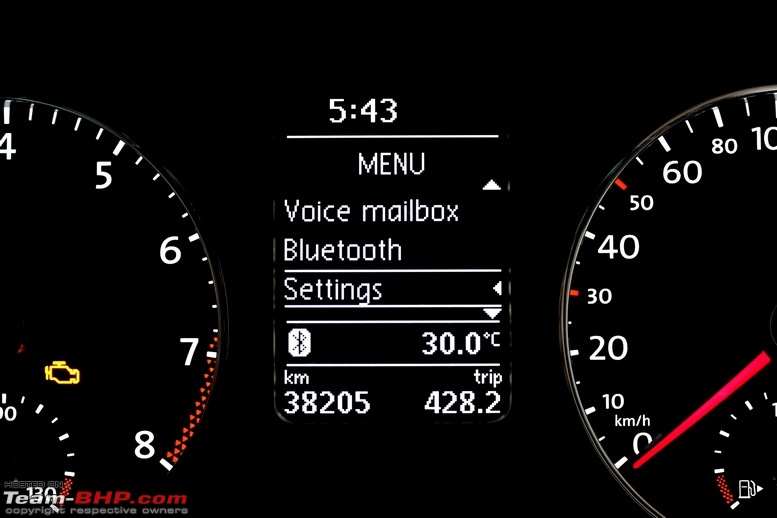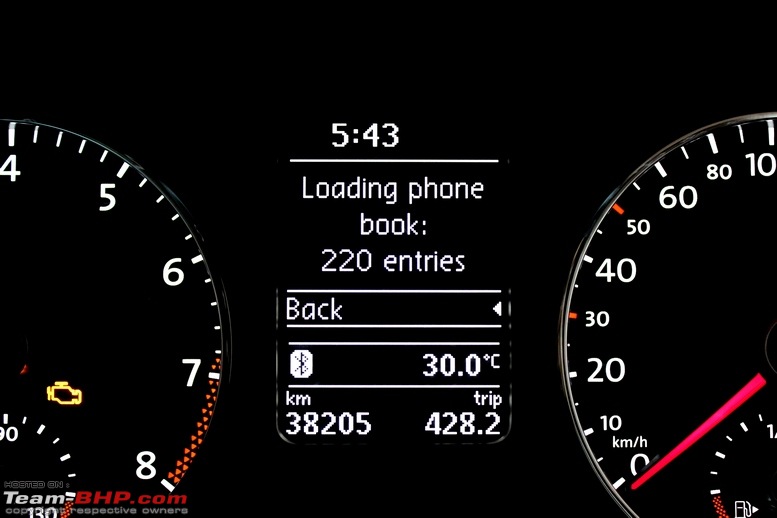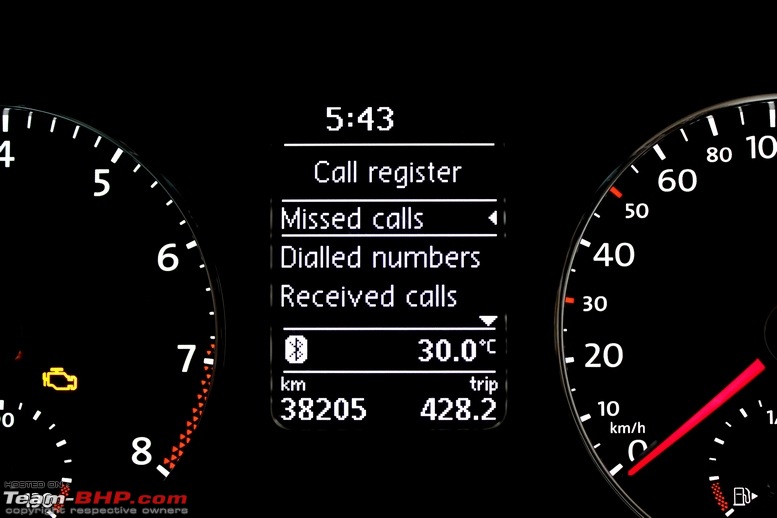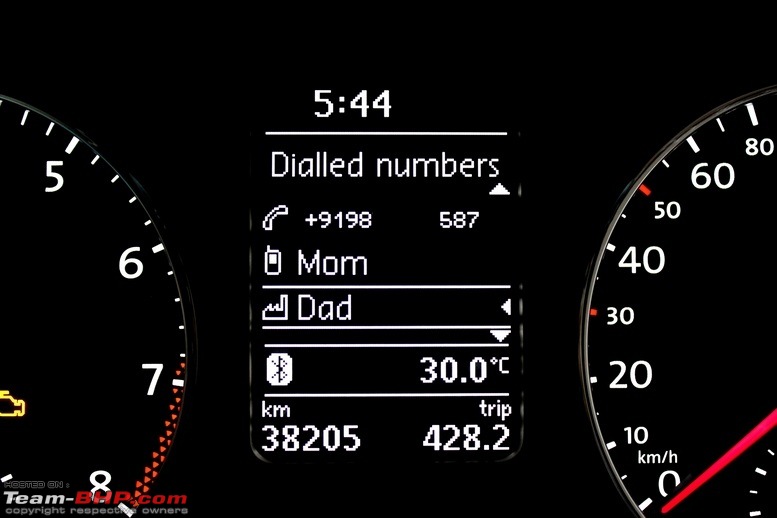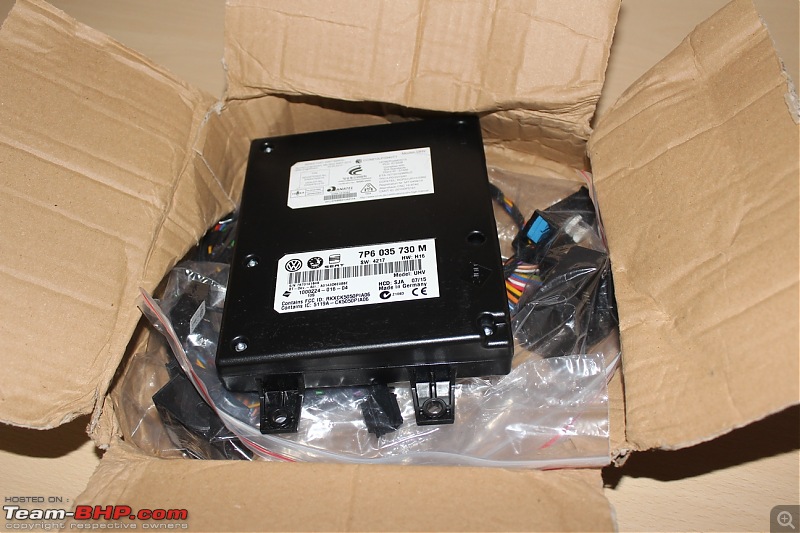| BT update post
Update: 24/07/2015 - Bluetooth module installation: Overview:
The RCD 510 unit does not have Bluetooth built into the unit (unlike the RCD 320) and a separate BT module is required to enable BT audio streaming or calling facility. There are several Bluetooth modules available in the market based on the functions supported, of which two of them are popular: a. 9W2 module - 1K8 035 730 X:
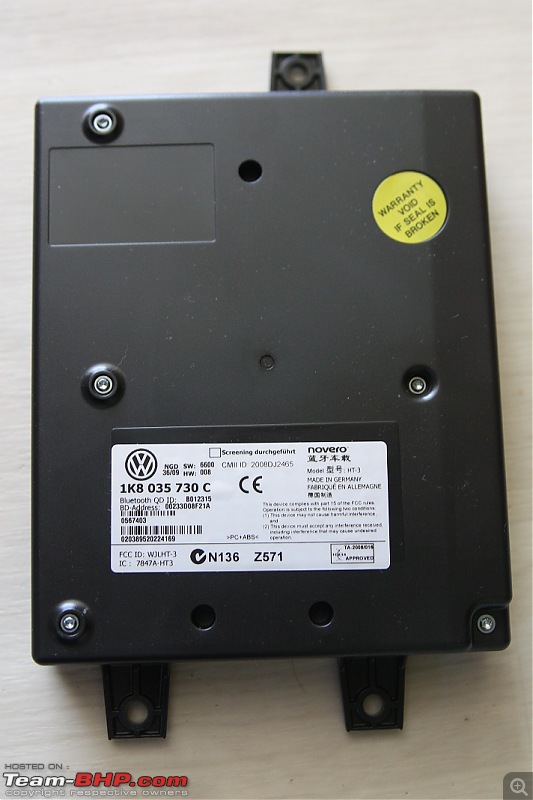 (Source: Google Images) (Source: Google Images)
- Supports A2DP (music streaming through the cellphone).
- Supports accepting incoming calls by pressing the phone symbol on the MFSW.
- Supports dialing outgoing calls by dialing through the cellphone.
- Supports voice controls through the cellphone.
- Does not display the phone book or call list on the RCD 510’s display or the MFD on the instrument cluster (if it is the GTI’s cluster with the white MFD).
- The last letter X in the part number is an alphabet that denotes the firmware version. A later one implies it is a more recent firmware and has been manufactured recently.
For cars which are equipped with a Delphi RCD 510 unit and do not have the MFSW (multi-function steering wheel) or with the stock instrument cluster, this is the suggested BT module.
b. 9W7 module - 7P6 035 730 X:
- Supports A2DP (music streaming through the cellphone).
- Supports accepting incoming calls by pressing the phone symbol on the MFSW.
- Supports dialing outgoing calls by dialing through the cellphone.
- Supports voice controls through the cellphone.
- Supports display of phone book or call list on the RCD 510’s display (if it is a Bosch unit) or the MFD on the instrument cluster (if it is the GTI’s cluster with the white MFD).
- The last letter X in the part number is an alphabet that denotes the firmware version.
For cars which are equipped with a Bosch/Delphi RCD 510 unit (supports display of phonebook entries on the touchscreen), the MFSW (including the pre-2014 facelift Polo/Vento) and/or the GTI’s cluster (similar combination = VW Jetta), this is the suggested BT module.
There is a superior BT module which supports WiFi hotspots along with 2G and 3G. Uses an external GSM antenna (which supposedly gives better reception compared to the phone’s inbuilt antenna!), the codename is 9WZ and the part number is 3C8 035 730 X. BHPian ajaypjayaraj has installed this module along with the Columbus system (RNS 510’s Skoda equivalent) on his modded Yeti. BT Harness:
In addition to the BT module, a mic and the associated harness is required to pair the BT module and the mic to the RCD 510 HU.
There are 2 types of harness available in the market: a. Type 1:
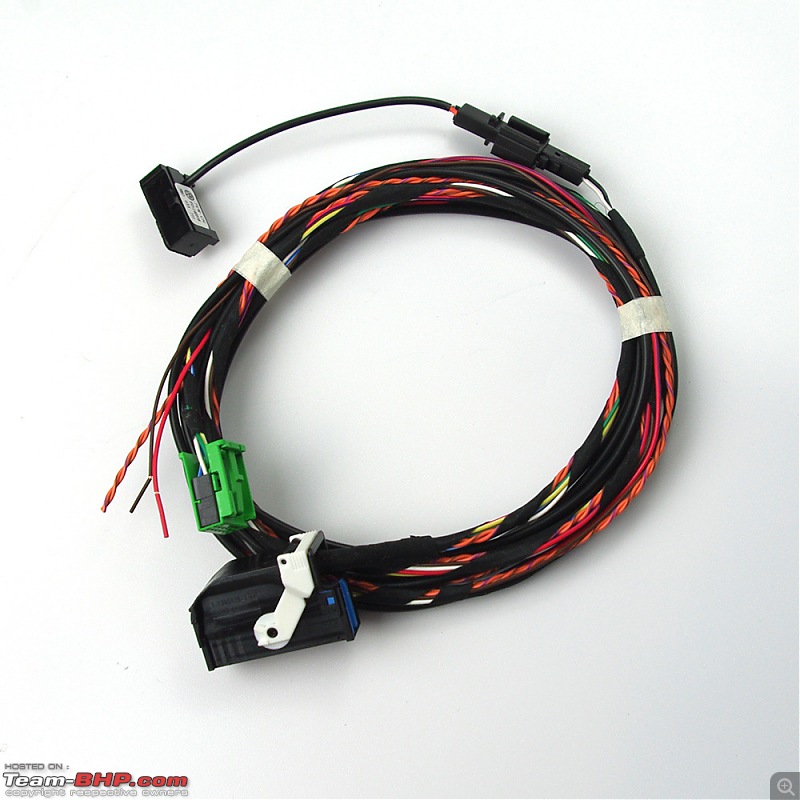 (Source - Google Images) (Source - Google Images)
This harness comes with bare wire ends for connections to the CANbus (+ and -), 12 v power and GND. The 12-pin green female connector is inserted into the empty slot in the Quadlock connector which is plugged to the RCD 510 HU. The 54-pin female connector connects to the BT module. You will have to tap the existing CANbus and power cables from the rear of the HU to connect the bare cables.
b. Type 2:
This harness is completely plug-n-play and does not require fiddling with any of the cables. It has a male Quadlock connector to which the existing female Quadlock connector (plugged to the HU) is connected and a female Quadlock connector which connects to the HU. The rest are the same as that of Type 1. This one requires lesser efforts and time during installation and is a few dollars more expensive than the Type 1 loom. The only drawback is, the loom is a bit thick and will have to be tied up neatly to avoid a messy cable routing.
The mic unit connects to a 2-pin connector on a separate long harness that is routed through the A-pillar.
This loom also offers 2 ways in which the mic can be connected:
a. For BT connection only.
b. For BT connection alone and voice recognition.
Since time was a constraint, we chose to go with the BT connection only. We will be exploring the other option when we have some spare time at our disposal. Installation of the module: 1. Remove the co-driver side A-pillar trim:
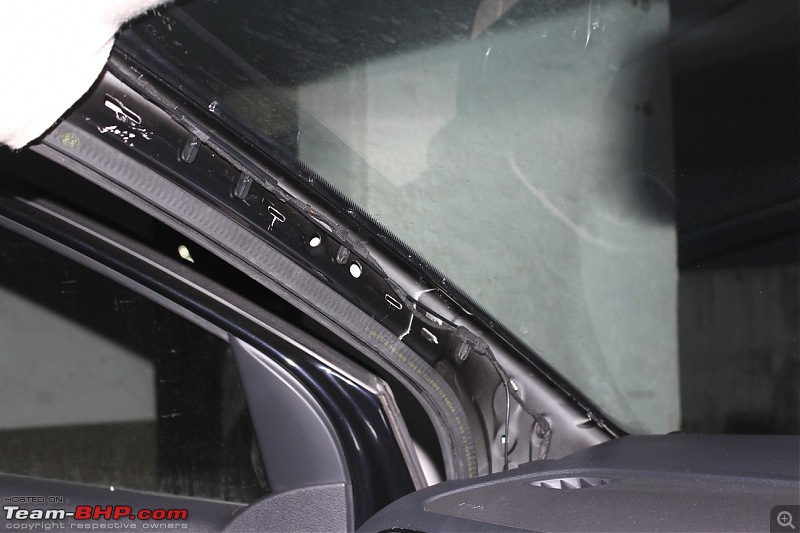
Route the mic cable from the dash to the headliner (leave sufficient cable for routing it to the cabin light area) and use the cloth tape to tie the cabin light harness with the mic cable.
2. Unscrew the cabin light from its slot and insert the mic. The connector also has a slot in the cabin light - insert it firmly into place:
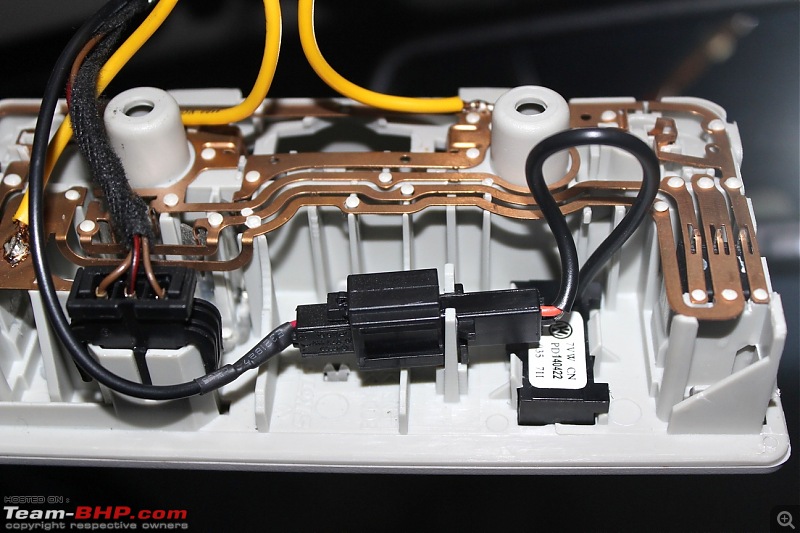
Route the mic cable through the headliner and plug the respective connectors.
3. Remove the HU, undo the 4 Torx screws and disconnect the female quadlock connector.
Connect the female quadlock connector to the BT loom’s male quadlock connector and the female quadlock connector of the loom to the HU:
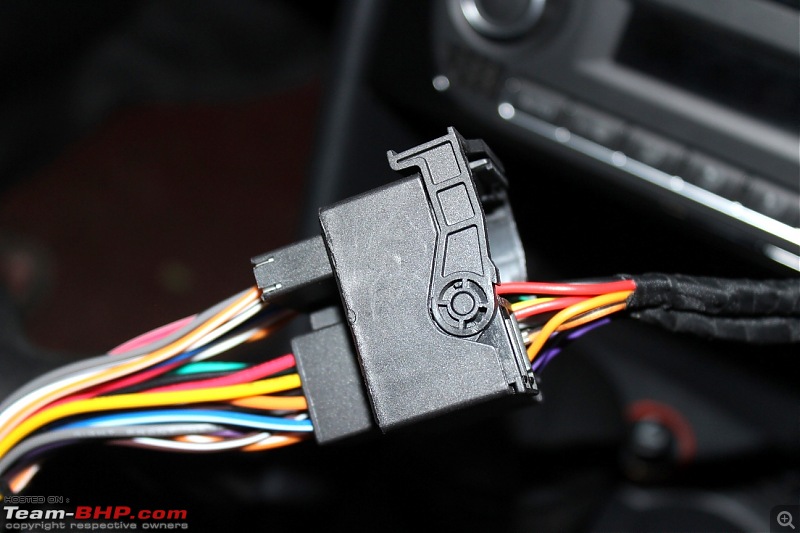
4. Decide where the BT unit will be secured. There are several locations where the unit can be placed:
a. The flat bottom area of the glovebox recess.
b. The area below the driver/passenger’s seat (default location chosen by VW for installations on Golf). Requires an additional styrofoam unit.
c. The area behind the climatronic unit. Requires plenty of foam padding to cover the unit so it doesn't rattle. I chose the area below the glove box recess since the access is easy and does not require many trims to be removed.
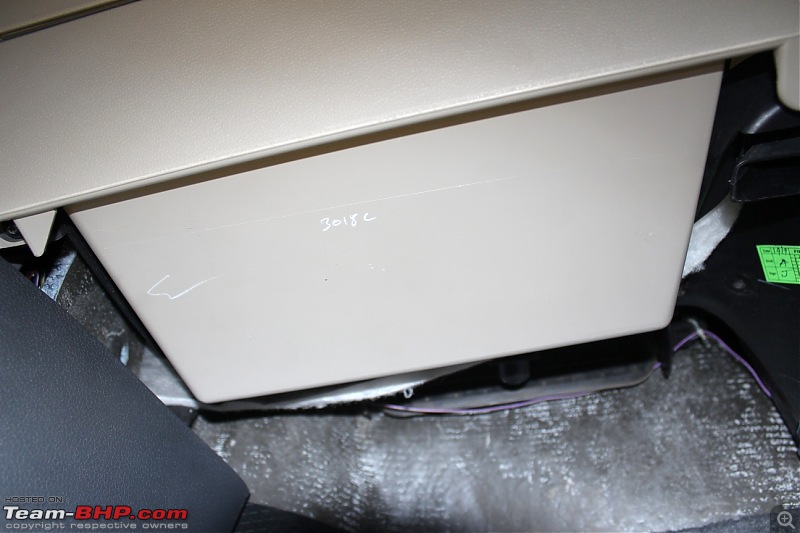
Use the double-sided tape on the 4 corners of the unit to prevent it from unwanted rattles:
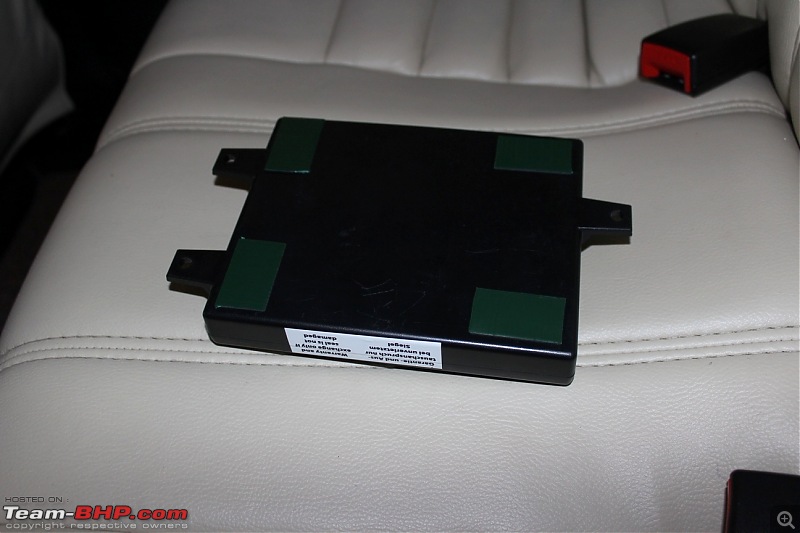
Mark the holes below the glove box by placing the unit, drill/use a soldering iron to make the holes and bolt the unit in place:

Route the BT harness suitably and connect the 54-pin connector to the BT unit. Notice the location of the white latch of the connector w.r.t. the stickers on the unit:
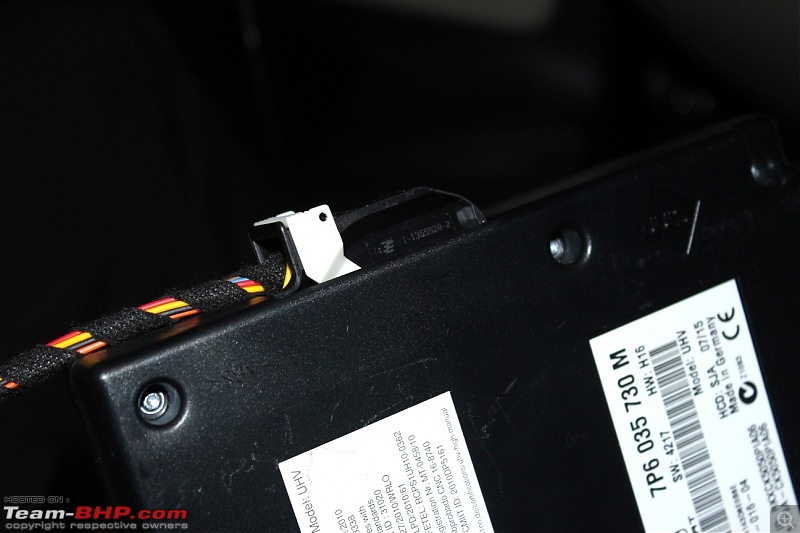
Tie the remaining harness using some zip ties and secure it behind the dash:
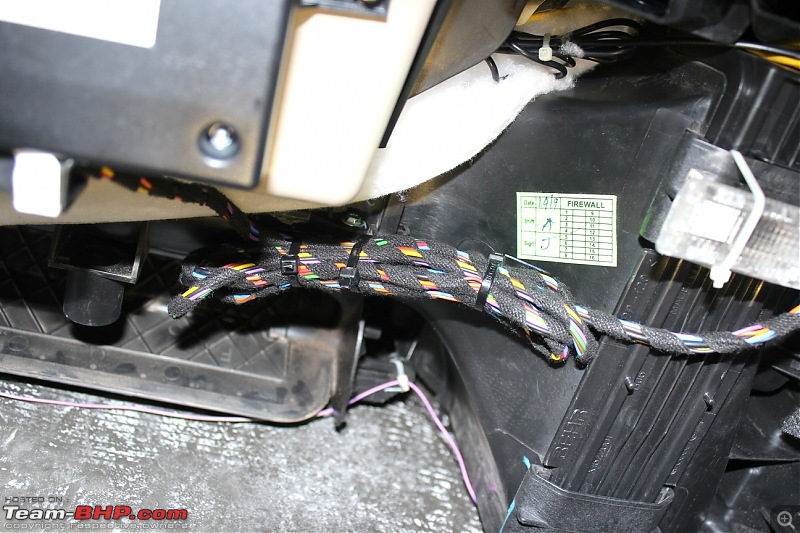
5. Once all the connections are in place, the BT unit will be recognised by the HU without any VCDS intervention. Notice the Bluetooth symbol along with the other sources:
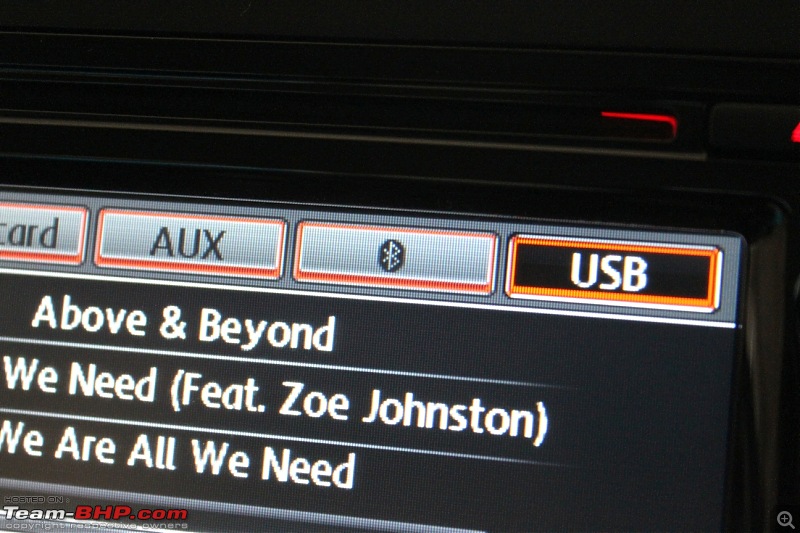
However, VCDS is required to add Telephone to the installation list so it shows up on the MFD.
Click on 19-CAN Gateway:
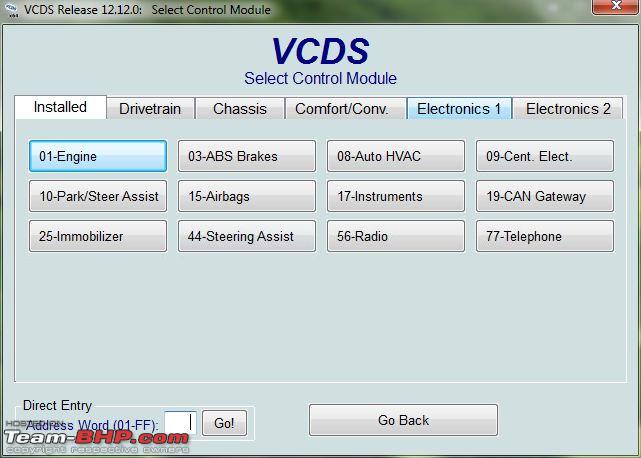
Click on Installation List:
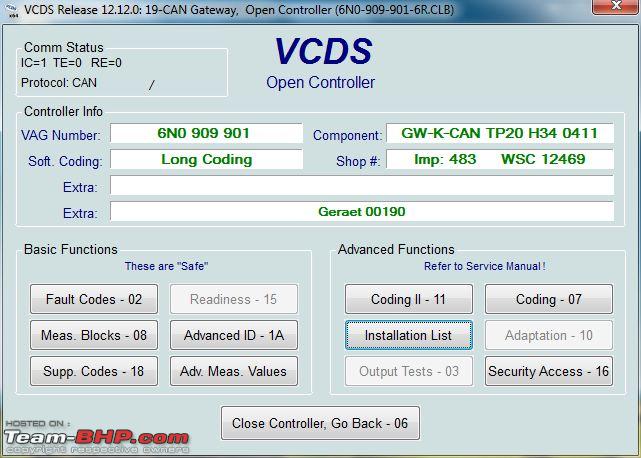
This will bring up the installation list as shown:

Select 77- Telephone:
This will enable Phone to be displayed in the MFD:
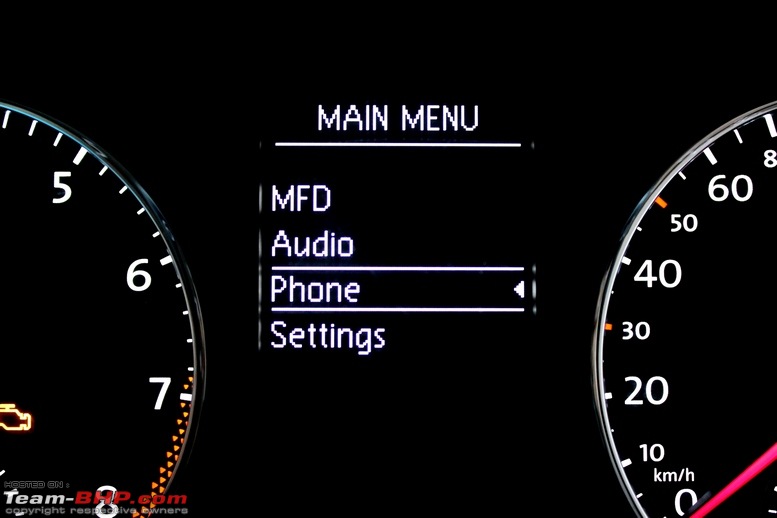
6. Results:
Purchase Experience:
The 9W7 module and the harness was purchased from eBay Germany from a Poland based seller (ID: atom960) for a price of 200 Euros (via PayPal; Rs. 14386 charged to the credit card) including expedited shipping via Polish Post. The seller quickly dispatched the shipment a day after the payment was made and the tracking number was updated on eBay. I was able to track the consignment (just to ensure it doesn’t get held up at the customs) but received it only after 19 days. Reason? The box did not have the details of the contents inside (just the consignee address and the tracking number) and the post office had no clue what was inside. They decided to hold the consignment.
I had to call up the post office which dealt with the customs clearance who had requested me to send an email to them with the payment details, purchase details, identity proof etc. Sent them these documents quickly but due to Id and the weekend, they happened to clear it the next week and charged Rs. 1269 as customs duties. The postman delivered the package and to my shock, when I opened the box the unit and the harness were simply thrown inside without any bubble wrap or styrofoam peanuts inside.
Fortunately, there was no damage during transit and the unit worked fine! I sent a feedback mail to the seller insisting him to pack the contents adequately.
Last edited by Gannu_1 : 27th July 2015 at 11:50.
| 

 (1)
Thanks
(1)
Thanks

 (2)
Thanks
(2)
Thanks
 (1)
Thanks
(1)
Thanks


 (1)
Thanks
(1)
Thanks

 (4)
Thanks
(4)
Thanks









